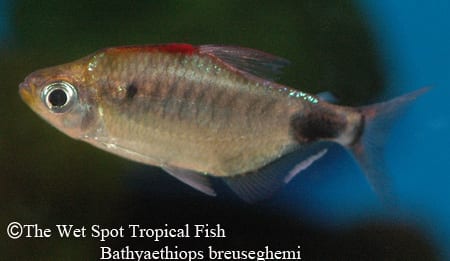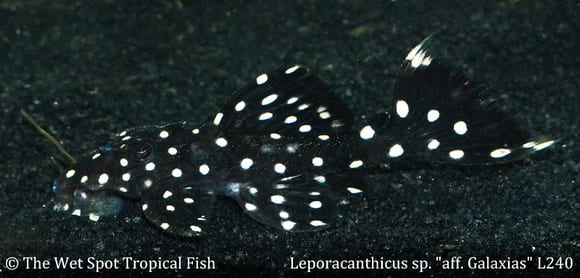Give Pisces a Chance
Give Pisces a Chance
Lately, it seems our society focuses so much on what makes individuals and the groups they belong to different from one other. While it is, undoubtedly important to celebrate these differences, and to embrace diversity as a way to better society, it’s important to make sure highlighting our variance doesn’t keep us from uniting in pursuit of scientific and human advancement as a whole. After a decades-long Space Race during the Cold War, the collapse of the Soviet Union opened the door to collaboration between American and Russian space programs to make humankind’s 100th space mission a milestone event. On June 29th 1995, the American space shuttle Atlantis docked with the Russian space station Mir to form the largest man-made satellite ever to orbit the Earth. To celebrate the recent anniversary of this joint accomplishment between scientists and engineers from countries with a tumultuous history, this week, we’ll highlight a few of our favorite celestial swimmers: Mastacembelus alboguttatus, Bathyaethiops breuseghemi, and Leporacanthicus cf. galaxias.
Scientific NameMastacembelus alboguttatus
Common NameStarlight Eel
Temperature / pH75 to 82°F / 6.0 to 7.0 pH
Native LocationSoutheast Asia
Preferred DietOmnivorous
Spending most of its active time under the light of the moon, M. alboguttatus is a beautiful spiny eel native to the Sittang river of Myanmar and the Salween basin of Thailand. Reaching a very long 19 inches in length, these “Starlight Eels” are brown in coloration with dark-rimmed spots and many star-like light dots covering their length. With a preference for sluggish river stretches with dense vegetation, these eels do best in well-planted tanks with sandy substrate and an abundance of hiding places formed from smooth-edged furnishings like length of PVC pipe, rock work, caves, and bogwood. Water flow should be subtle, and tanks lids should be tight-fitting to prevent escapes. Though they are nocturnal in the wild, they can adjust to diurnal schedules in captivity so long as lighting is low. Generally peaceful community fish, they are predatory toward small, live fish. Be careful not to mix with tank mates that are small enough to fit in their mouths. They may also be slightly aggressive toward conspecifics, so we recommend keeping only 1 individual per tank, or groups of 5 or more to overwhelm the aggressive tendency. Omnivorous by nature, they should be fed varied diets consisting of items like small feeder fish, aquatic invertebrates, vegetable matter, and detritus. Water conditions should be maintained with temperatures between 75 and 82°F, pH of 6.0 to 7.0, and hardness between 90 and 214 ppm.
Scientific NameBathyaethiops breuseghemi
Common NameRed Cap Moon Tetra
Temperature / pH75 to 79°F / 6.0 to 7.0 pH
Native LocationDemocratic Republic of Congo
Preferred DietSmall invertebrates
As rare in the trade as missions to the moon, B. breuseghemi is a beautiful tetra hailing from the Democratic Republic of Congo. Known more commonly as the “Red Cap Moon Tetra”, these beauties reach about 3 inches in length, have shining pinkish silver bodies, a red blotch on their dorsal hump, red accents on their fins, and a black spot at the base of their caudal fin. These tetras do best in larger tanks with biotope setup including sandy substrate, bogwood, hardy African plants like Anubias, and peat. Generally peaceful, they do have a tendency to be a bit nippy, so be sure not to mix them with sensitive species. Optimal tank mates include other African tetras, and small, West African dwarf cichlids. Schooling by nature, they are most at ease in conspecific groups of 8 or more. Feeding predominantly on invertebrates in nature, they should be fed high-quality diets consisting of items like Daphnia, bloodworm, brine shrimp, and high-quality flake. Tank waters are best maintained with temperatures of about 75 to 79°F, pH between 6.0 and 7.0, and soft waters under 180 ppm.
Scientific NameLeporacanthicus cf. galaxias
Common NameL240
Temperature / pH82 to 87°F / 5.6 to 7.0 pH
Native LocationVenezuela
Preferred DietOmnivorous
While not everyone can live their childhood dreams of exploring galaxies as space cowboys, it is easily as satisfying to explore the galaxy-like spots on these L. cf. galaxias “L240” plecos. Reaching nearly 10 inches at max size, these plecos are a dark navy to black coloration spotted with white over their entire bodies. Native to the upper Orinoco of Venezuela with flowing waters, sandy substrate, variably-sized water-worn rocks, and driftwood branches and tangles, it is best to keep them in tanks with as much of these furnishings as possible. Be sure to provide plenty of hiding spots formed from elaborate rock work or driftwood branches. They are generally peaceful though slightly aggressive and territorial toward other large bottom dwellers or catfish similar in appearance, though they do fine with smaller, lively catfish. Opportunistic omnivores in the wild, they should be fed varied diets with plenty of fresh vegetal matter, algae wafers, and live and frozen invertebrates including shelled crustaceans and molluscs. Tank waters should be kept warm with temperature of 82 to 87°F, pH of 5.6 to 7.0, and hardness of 0 to 178 ppm.
What questions could be more unifying than: where do we come from, what is our place in the universe, is there anyone else out there, or what can we learn about our planet by observing from a distance? Space (and space-themed fish?) the final frontier, and a way to transcend ideological and socioeconomic differences.


